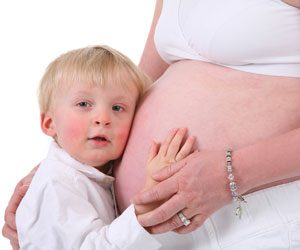
Call the real midwives – My mum was a midwife in the East End of London in the 1950’s and so I grew up surrounded by stories of midwifery. It was probably one of the main reasons I became a midwife, going to the UK to undertake my midwifery training. When the TV series Call the Midwife came out I felt very sad not to be able to share it with my mum as she had already passed away.
In June 2014 I went to the UK and met up with mum’s best friend Fiona Haines (my youngest oldest friend I call her) and her friend Valeria Brigden. Mum worked with them both in the East End in the mid-1950s, along with Sister Christina who was one of the nuns working during the period as depicted in the TV series. The following is our trip down memory lane with the real midwives from the East End of London.
Call the midwife: Arriving at St Frideswide’s Mission House in 1959
In 1959 my mum, her best friend Fiona and my grandfather knocked on the door of the imposing St Frideswide’s Mission House in Lodore Street in the East End of London. Fiona remembers that Jennifer Worth opened the door (then Jenny Lee who wrote the book Call the Midwife). Jennifer looked down her nose over a pair of glasses and said “I will let the sister superior know you are here.”
“I was terrified.” says Fiona. “I thought what on earth have I got myself into.” Apparently, my mum was doing a good job faking calmness, a characteristic that came to define her.
The remembered real Nonnatus House (St Frideswide’s Mission House) being cold. The kitchen was the warmest place where everyone naturally congregated. The bedrooms were basic, with an iron bedstead and everything is green, even the floor. The name of a virtue was over each bedroom, the bathroom had ‘perseverance’ and opposite the telephone was ‘peace’.
Valeria remembers joining the nuns in the tiny chapel for worship.
After lunch they would have 45 minutes for crafts and when the weather was good this was undertaken on the roof of the mission house (the second most popular place to the warm kitchen). It was here that Valeria remembers asking Sister Monica to show her how to crochet a neckline for a knitted vest. “I’ll teach you.” said Sister Monica reaching for the knitting. However, almost immediately she handed it back saying “on second thoughts you can ask for help each time and that way you will remain humble”.
Fiona remembers the fierce midwifery tutors they had and none was more fearsome than Sister Madeline. Sister Madeline had a fat cat who seemed to vibrate with rage and was as fierce as its owner. Fiona remembers her barking at the students “what is the most important thing a new baby needs?” Cleanliness was the usual answer, upon which she would retort “rubbish, a baby cannot survive without warmth.”
Call the real midwives: Stories from the East End
Working with the nuns from the Community of St John the Divine was like stepping into a different world for them all. Valeria remembers the flats with a single toilet in the yard, no bathroom and five flights of stairs to navigate with small children. Not to mention the midwives with heavy equipment required during births.
Fiona describes tiny homes where the bath was in the kitchen. They stored wood in the bath and a wooden top covered the bath turning it into a functional table. Children often slept, top to toe in a bed, or on the floor and there were often rats and fleas to contend with. The washing was hung across the communal squares and streets and women would calmly shake out the rugs gnawed by the rodents. Fleas were effectively captured with a bar of wet soap.
For a very rough part of London the midwives don’t ever recall feeling threatened. They were respected and protected by the community. Valeria recalls being accosted by a couple of boys wanting to rifle through her bags but before she could react one said, “Blimey she’s a nurse let er go.”
Who is Chummy?
Meeting Sister Christina confirmed what I had always suspected, that Chummy must be my friend Fiona. Fiona is the daughter of a British Army officer, born in India during the time of British colonial rule and raised in the rolling green hills of Surrey (Julie Andrews was her neighbour). At 5ft 11 inches, the resemblance to Chummy is uncanny. Fiona points out however that she could ride a bike when she arrived. She was given a ‘sit up and beg’ bike to fit her long legs, and hauled out of the convent cellar by the nuns. They called the bike Persephone as it came from the underworld.
Which stories are true?
I asked the midwives which of the stories in the TV series of Call the Midwife they recognised. They had both been interviewed by the film producers along with the retired nuns who now live in a house in Birmingham. They all agreed that the series captured the period well. Women did arrive at the baby clinic in slippers with a scarf covering the rollers in their hair. Children were always outside and men would sit and play dominoes on the doorsteps.
When they were going to a birth, the children always knew where it was happening and would guide the midwives if this were needed. Neighbours would come over with blankets or hot water when someone was in labour.
Birth was a very public, yet also a private event. However, fathers did not go anywhere near their wives when this was happening and the midwives would have been horrified had they done so.
Sister Christina said the story about the birth on the boat was true.
But in real life, it was the Captain’s wife, not his daughter who gave birth. But as in the series the midwife had to lug her equipment up over the side of the ship.
The 50th anniversary of holy orders as seen in the episode where Sister Evangelina is given a pair of shoes amongst other gifts at her Jubilee is a reflection of a real life event for Sister Christina. However, Sister Christina says she actually got an iPad but this would not have looked very authentic in a show set in the 1950’s.
Fiona remembers a woman being frightened to push her baby out, fearing it would be black. Much to everyone’s relief it had blue eyes and flaming red hair. However, in the TV series the baby does comes out black with a rather more dramatic result.
Valeria remembers crossing the Thames to the Isle of Dogs by a ‘barge bridge’ as the actual bridges were up. When she returned a few hours later the Bargemen were waiting to see if she had got there on time and all cheered when she confirmed she had.
Response to home birth
Valeria remembers that going to the hospital terrifies women as they thought they might die. Further, the strict 10 days of bed rest required after the birth, with no children visiting because of the fear they carried infections, meaning the women wanted to be at home. At home “they were supposed to stay in bed” says Fiona. “But we knew they didn’t because the soles of their feet were black.”
Called to births around three times a week they have few memories of disasters. Women were low risk but the midwives also believe the rationing after the Second World War meant people were eating a more balanced diet and this improved outcomes.
Visiting the real Nonnatus House
Fiona and I visited ‘the real Nonnatus House’ as an extension of our verbal trip down memory lane. We caught the Docklands Light Railway from Woolwich and went to All Saints station. The landscape has changed dramatically since the days my mother cycled around the streets on her bike. High-rise flats now appear everywhere and there are not many of the original houses or landmarks left. However, Lodore Street was like stepping back in time and St Frideswide’s Mission House was there, unchanged and timeless. Built in 1892 it has been beautifully preserved. It now contains a series of modern apartments. Fiona had not been back for 55 years and it was touching to watch the memories come flooding back. “Do you know this is the real Nonnatus House?”. I asked the kind woman who let us in “from the series Call the Midwife?”
Page revised on 15th December 2021


Recent Comments